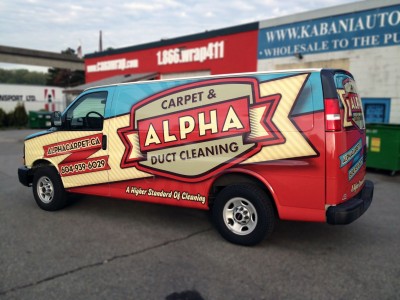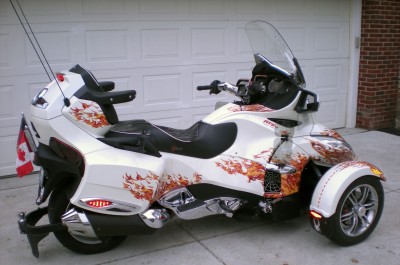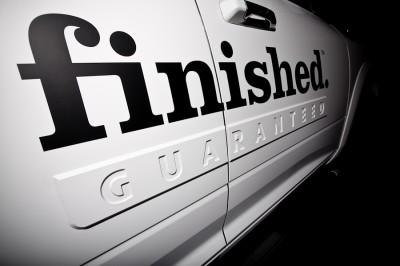
Jonathan Glen, owner of Canawrap, chooses films and laminates to produce a ‘painted on’ appearance for some vehicle wraps.
Advantages on the road
Lamination is recommended for inkjet-printed graphics in general, as it helps ensure a longer lifespan, by protecting against physical damage and ultraviolet (UV) radiation, and it provides optimal quality in terms of colour and gloss. These factors are particularly pertinent to vehicle wraps, however, which are much more prone than other signage to abrasions, particulate matter and sunlight.
As Glen suggests, outgassing printed films to let them dry before applying a laminate helps avoid a graphic failure later. If a print is heavily saturated with ink, i.e. darker rather than lighter in colour, it will need a longer outgassing period.
“It’s important for newer sign shops to know not to laminate right after printing, but to allow the offgassing first,” says Joshua Culverhouse, a senior product support specialist for Oracal, which manufactures films and laminates. “That will help prevent edge curling, shrinkage, discolouration and delamination. Laminating too soon, on the other hand, traps gases and causes havoc for the adhesive in the base layer. The graphic will appear weathered, cracking and yellowing as the material dries out and is no longer soft and supple. The average life of a wrap is three to four years, but you can see these failures after just six months to a year!”
It is also important to avoid incompatibility problems between films and laminates, which can also cause shrinkage and limit durability. Through research and development (R&D), products are tested and altered to work in concert with each other. Even combining two cast products or two calendered products from different sources, rather than the same manufacturer, may reduce performance.

Vehicle wraps heavily saturated in ink will require more outgassing time to let them fully dry before they are laminated and installed. This will help prevent discolouration and delamination. Photos courtesy Power Sports Wraps
“Vehicles are where you run into the most issues with compatibility,” says Culverhouse. “It’s important to use highly conformable films with matching laminates to work in unison. They must be dimensionally stable when working together.”
From finishing to refinishing
While the Lamborghini was Canawrap’s first chrome-film application, custom automotive refinishing in general has become a significant part of its non-signage business, providing a faster and less expensive alternative to a custom paint job.
“Matte black is hugely popular,” Glen says. “Next is matte white. We’ll also do custom colours and apply a matte overlaminate to them. Vehicle wrapping is still very new to most people, so they appreciate it if we explain the process.”
Some of Canawrap’s potential customers, however, are better off getting an actual paint job for their cars, so Glen refers them to a nearby spray-painting company.
“When you want paint, you should get paint,” he says. “Wraps, on the other hand, are custom refinishes you may want to change in two to three years. A few years ago, cars with sprayed matte finishes were introduced, but then you’re stuck with that colour forever. Vinyl shouldn’t be seen as the same.”

Another of Canawrap’s finishing techniques is to apply dimensional embossed lettering with a full matte white wrap overtop. Photo courtesy Canawrap
Other vinyl and polyurethane (PU) films are designed to add paint protection for vehicles, enhancing their impact resistance. These finishing products are used on race cars, for example, where a wrap is laminated and then the extra protective layer is added either to the front or the back of the graphics before installation.
Some chrome films, meanwhile, are meant as ‘accents,’ providing a mirror-like finish for various automotive features, such as gas caps, stripes and door handles, but—unlike the one Canawrap used for the Lamborghini—are not recommended for full wraps. Their purpose is simply to give automotive detailers, hobbyists and wrap shops another option for personalizing vehicles.
“I installed a conformable chrome film on the door handles, side moulding and hood accents of some Fiat 500s at the International Sign Association’s (ISA’s) International Sign Expo,” says Justin Pate, a well-known vehicle wrap installer and trainer. “It is cool stuff and very easy to position as an accent on any vehicle.”
With files from Canawrap, Oracal, 3M and Avery Dennison Graphics and Reflective Solutions. For more information, visit www.canawrap.com, www.oracal.com, www.3m.com and www.averygraphics.com.





